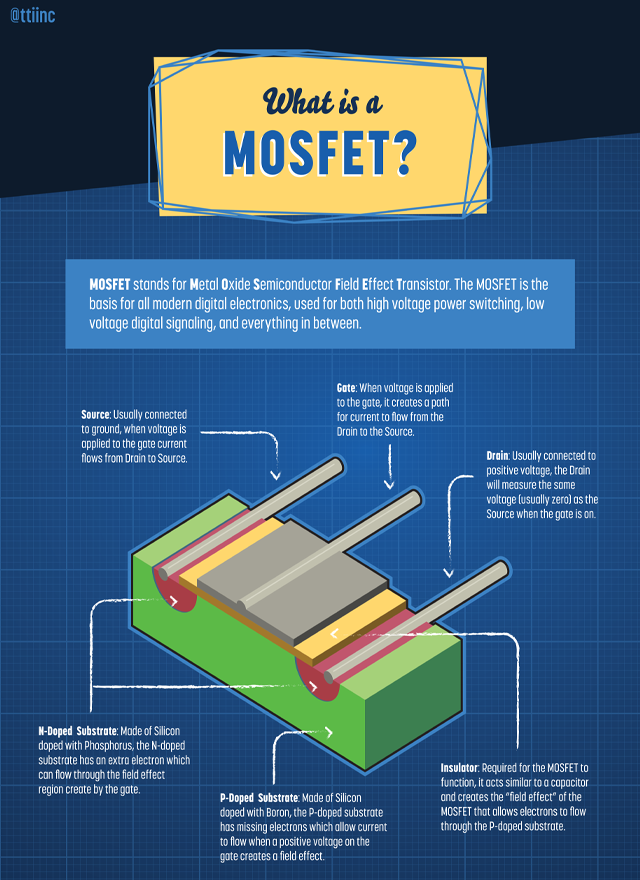Diagram Of A MOSFET
What is a MOSFET?
MOSFET stands for Metal Oxide Semiconductor Field Effect Transistor. The MOSFET is the basis for all modern digital electronics, used for both high voltage power, switching, low voltage digital signaling, and everything in between.
The internal components of a MOSFET:
Source: Usually connected to the ground, when voltage is applied to the gate current flows from Drain to the Source.
Gate: When voltage is applied to the gate, it creates a path for current to flow from the Drain to the Source.
Drain: Usually connected to a positive voltage, the Drain will measure the same voltage (usually zero) as the Source when the gate is on.
N-Doped Substrate: Made of Silicon doped with Phosphorus, the N-doped substrate has an extra electron that can flow through the field-effect region created by the gate.
P-Doped Substrate: Made of Silicon doped with Boron, the P-doped substrate has missing electrons which allow current to flow when a positive voltage on the gate creates a field effect.
Insulator: Required for the MOSFET to function, it acts similar to a capacitor and creates the “field effect” of the MOSFET that allows electrons to flow through the P-doped substrate.
Looking for MOSFETs? Search TTI's Inventory
